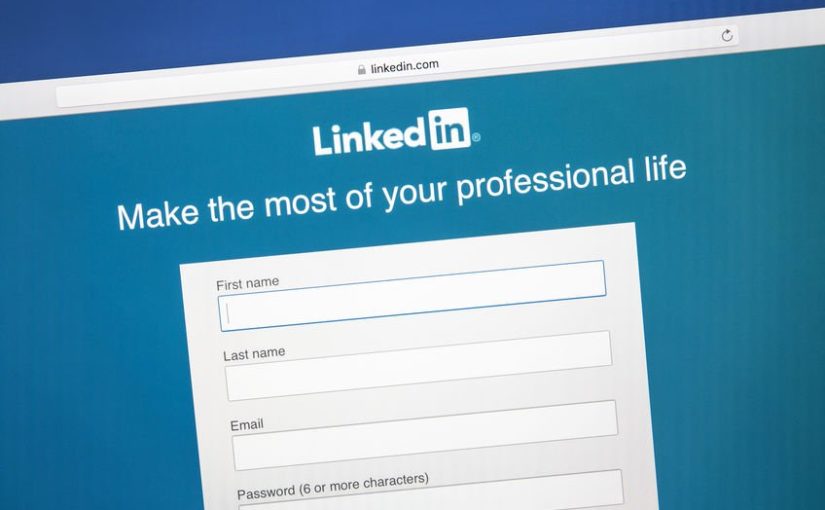Not many people enjoy writing summaries. Or bragging about themselves online.
It’s no surprise that the idea of creating a LinkedIn summary is terrifying to a lot of people, but if you want to establish a professional online presence, that’s a fear you’re going to have to face. And we’re here to help.
What is it?
Your LinkedIn summary is a short description of who you are, what you do, and why you do it.
When properly written, it provides valuable insight into your motivation, your area of expertise, and what it’s like to work with you. These are the kinds of things people are looking for when searching for new business connections, partners and talent.
Having no LinkedIn summary in your profile is like having toast with no jam. Crackers with no cheese. Cake with no frosting. You may have the basics covered, but you’re not giving anyone much to get excited about. And you’re seriously lacking in flavor.
What are the key ingredients?
Your inspiration. Your skills. Your experience. Your personality. And guess what? You only get 250 – 500 words to convey all of this information. It may sound impossible, but it’s really not. You just need to be concise and to the point.
If you feel those nerves kicking up, don’t worry. We’ll break these things down one by one.
Your Inspiration
What’s the best part about your job? That one thing that keeps you going, even on your worst day. For a lot of us, it’s helping people. But helping people do what?
- Helping entrepreneurs bring their ideas to life
- Helping businesses take care of their employees
- Helping people discover their true passions
But don’t get stuck on the word helping. There are plenty of other words you can use to explain your why.
- Delivering life-saving medicine
- Creating beautiful spaces that bring peace
- Empowering collaboration through fun and play
They key here is not to tell your life story. Let people know what inspires you about your work but do it in a way that is short and concise.
A third-generation physician, I grew up in hospitals and scrubs. And there’s no place I’d rather be. Being able to help a family during a medical crisis is an incredible gift, and one that I take very seriously.
Look at that. 38 words. And you kind of want this person to be your doctor, don’t you? Now you just have to come up with one to three short sentences on what motivates you. Deep down. Where it counts.
Your Skills
We’re not talking about your entire resume here. What you want to do is pick two or three things that really define your strengths. Are you super organized? A data whiz? Do you have a way with words? People? Processes?
Choosing your skills can be difficult. Often, people think the things that are easy for them must be easy for everyone. This is not the case! If something is easy for you, it’s because you’re really good at it. Think about your personal superpowers– the things people always ask you to do. Not because they don’t want to, but because you’re just so darn good at them! Those are the kinds of things you want to include here.
An organizational fanatic, I can make your garage sale look like a meticulously stocked convenience store, your kitchen function like a five-star restaurant, or your sales department run as smoothly as a new Ferrari.
Is this a bit of an exaggeration? Maybe. Maybe not. Either way, it gets the point across. Want someone who is detail-oriented and loves processes? Need systems that work more efficiently? Work with this person.
Your Experience
When it comes to experience, no one is looking for a laundry list in your summary. That would not only be boring, it would be redundant. If you’ve filled out your profile correctly, your full work history will already be listed.
What you can do, however, is include some additional information about the kinds of experiences you’ve had.
My experience as a business owner, board member, and part of a fledgling start-up team has given me a wide-ranging perspective on both business and employee lifecycles. This allows me to evaluate the employment relationship from all sides and find that perfect employer-employee match.
Rather than reiterating what you’ve done, summarize how your past work has made you better at what you do today, and well-equipped to take on more in the future.
Your Personality
In the great scheme of things, this may seem like the least important factor on the list but remember— we’re talking about social media here. It’s all about bringing your authentic self to the party. Make sure your summary section looks, sounds, and feels like you. If it doesn’t, you’re setting everyone up for disappointment.
Think about the sample LinkedIn snippets above. Did you feel like you knew some of these people? Like you wanted to hear more? Like they might make good connections or coworkers?
This is the jam on your toast. The brie on your cracker. The raspberry buttercream frosting on your cake.
Make sure your personal flavor is shining through, and you’ll attract people who are interested in what you have to offer.
Are we there yet? (a helpful checklist)
Not sure if you’re finished? Here’s a quick checklist for you:
- Is your summary between 250 and 500 words?
- Does it include your personal motivation and why?
- Did you pinpoint one or two skills that set you apart?
- Have you demonstrated how your experience has made you better, stronger, and more capable?
- Does your summary sound like you wrote it? Does it fit your personality? Is it consistent with your personal brand?
Great! You’re just about done!
The last step is to have at least one other person read through it and provide feedback. Not only will this save you from having typos in your LinkedIn profile (always a bad idea), it will also help you determine if you’ve let your personal strengths and personality shine through.
Happy writing!
Photo by inbj
![]()






